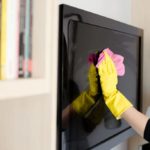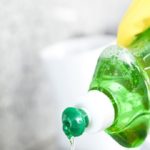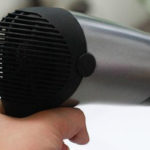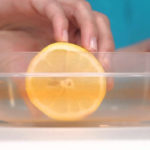A cutting board is an essential tool in the kitchen. It is used daily to assist in cutting, chopping, and slicing food. When using a cutting board, you may encounter issues with mold, especially with wooden boards. Moldy cutting boards can pose health risks and may lead to food poisoning.
When you notice mold on your cutting board, it is important to address it as soon as possible.
Toothpaste Method
Apply a layer of salt evenly on the surface of the cutting board. Then pour vinegar on top and continue spreading the salt and vinegar mixture across the board. Leave the salt and vinegar on the cutting board for about 5 minutes. Afterward, add a moderate amount of toothpaste to the surface of the board and use a brush to scrub it back and forth several times. This will remove any dirt or mold on the surface of the board. Simply rinse the board with clean water, pat dry with a towel, and then store it in a dry, well-ventilated area.
Using Baking Soda and Vinegar
Baking soda is known for its excellent cleaning properties. You can use it for cleaning various household items, including cutting boards. When combined with vinegar, baking soda becomes even more effective at removing stains, eliminating odors, and preventing bacterial growth. Apply a generous amount of baking soda to the surface of the cutting board. Then pour white vinegar on top. The combination of baking soda and vinegar will create a foaming reaction. Use a scrub brush with firm bristles to scrub the cutting board multiple times. Rinse the board with clean water afterward and store it in a dry area.

Baking soda and vinegar can help remove stains on the surface of a cutting board.
Using Salt and Lemon
Combining salt and lemon can create a natural cleaning agent that helps remove mold stains from a cutting board. Lemon contains acid, which softens dirt particles, while salt increases friction, making it easier to remove dirt stains. Sprinkle salt evenly on the cutting board’s surface. Then, cut a lemon in half and rub it directly on the board. The combination of salt and lemon will help eliminate stains and odors. You can continue adding salt during the scrubbing process. Once you feel the board is clean to your satisfaction, rinse it with clean water and let it dry in a dry area.
Preventing Mold on Cutting Boards
After cleaning, make sure to dry the cutting board thoroughly. Then, apply a thin layer of cooking oil to the surface of the board. The oil will help maintain the board’s condition and prevent cracking and mold growth. Wrap the cutting board tightly with plastic wrap and let it sit for about 4-5 hours for the oil to soak into the board.
Next, remove the plastic wrap and sprinkle baking soda on top of the board. The baking soda will absorb any excess oil. Use a brush to evenly spread the baking soda across the board, then rinse it with clean water. Dry the board and store it in a dry area. By following these steps, you can prevent mold growth on your cutting board.
After each use, it is recommended to wash the cutting board thoroughly and hang it in a dry area to avoid moisture and mold. Do not soak the board in water, as it can promote bacterial and mold growth.
It is also advisable to use separate cutting boards for raw and cooked foods to ensure food safety.
- Toothpaste Method: Apply salt and vinegar to the board, scrub with toothpaste, and then rinse.
- Baking Soda and Vinegar: Create a foaming reaction by combining baking soda and vinegar, scrub, and then rinse.
- Salt and Lemon: Sprinkle salt on the board, rub with lemon, and then rinse. This natural cleaner eliminates stains and odors.
- After each use, wash the cutting board thoroughly and hang it in a dry area to prevent moisture and mold.
- Avoid soaking the board in water, as it can promote bacterial and mold growth.
- Use separate cutting boards for raw and cooked foods to ensure food safety.






































